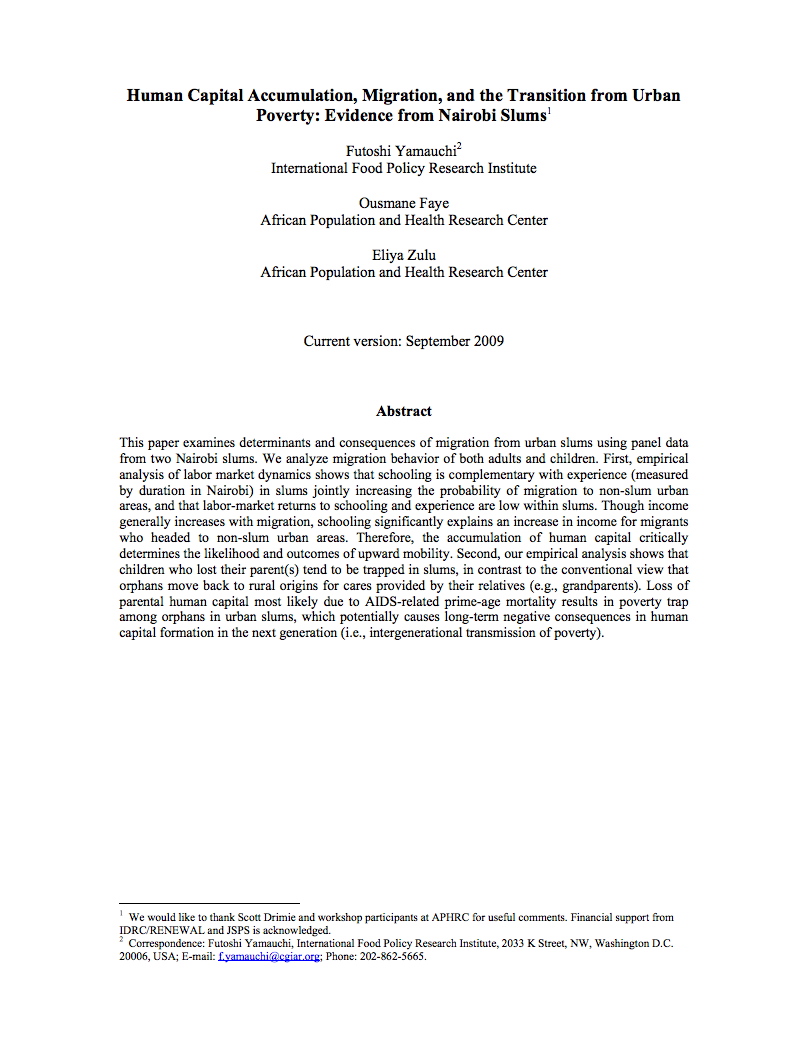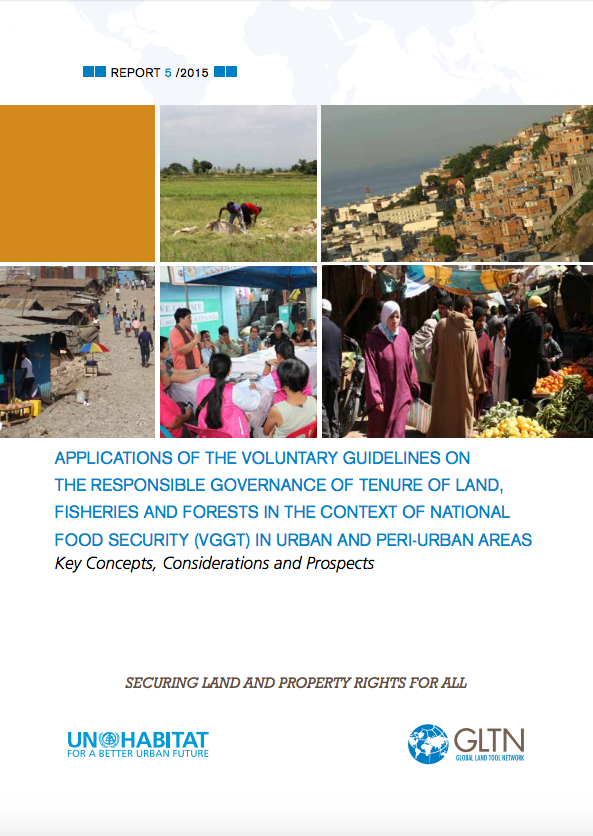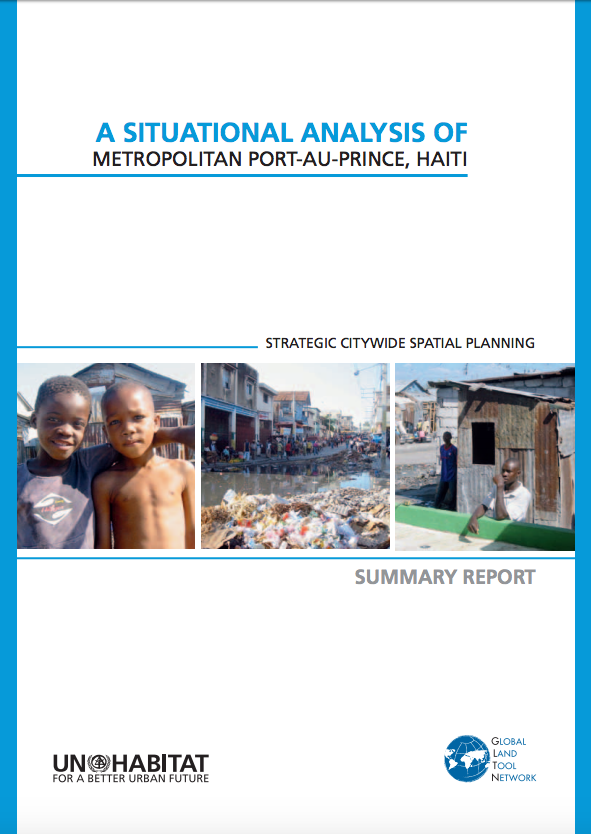Human capital accumulation, migration, and the transition from urban poverty
This paper examines determinants and consequences of migration from urban slums using panel data from two Nairobi slums. We analyze migration behavior of both adults and children. First, empirical analysis of labor market dynamics shows that schooling is complementary with experience (measured by duration in Nairobi) in slums jointly increasing the probability of migration to non-slum urban areas, and that labor-market returns to schooling and experience are low within slums.







